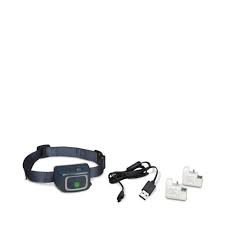Dogs are beloved family members that provide loyalty, friendship, and fun. Along with that, owning a dog also requires responsibility, especially when it comes to training them. Training a dog can be a huge challenge, especially if the right tools are not used. Therefore, choosing the right training method for your dog can be overwhelming, but it’s essential. Dog training collars are one of the most popular training tools that help pet owners train and discipline their dogs effectively. This blog will give you a comprehensive guide to understanding different types of dog collars that you can use to train your furry friend.
Traditional Buckle Collar
This is the most common type of dog collar that is made of nylon or leather material. The collar features a buckle that allows you to quickly attach and remove it. However, it is not the most effective training collar since it doesn’t provide any type of correction, making it more of a fashion accessory. This collar is mainly used for identification and good conduct walking without using any training methods.
Martingale Collars
Martingale collars are mostly used for dogs that pull or slip out of their collars. It’s designed to be tight when pressure points are triggered, preventing the dog from escaping. The collar’s design is perfect for training dogs that are great at backing out of collars; however, it’s not meant for training dogs that need to learn specific commands.
Prong Collars
Prong collars are also known as pinch collars. They feature spiked prongs arranged in a ring around the collar. The spikes dig into the dog’s skin when pulled, creating discomfort, and the dog learns to avoid that discomfort. They are considered very effective in training dogs that are stubborn or aggressive by compelling them to obey commands. It’s important to note that a prong collar should only be used as a last resort when all other training techniques have failed. Incorrect usage or sizing can result in physical harm to the dog, which can prove to be fatal.
Electric Collars
Electric collars are also known as shock collars and are designed to emit an electric shock when the collar’s button is pressed. These collars are known for being controversial, and pet owners should use them with caution. The collars can cause serious physical or psychological harm to your pet when used incorrectly, and therefore, they should only be used by trained professionals or in extreme situations. However, according to research, they can be a potential alternative to traditional training methods for a dog that is unresponsive to traditional training.
Citronella Spray Collars
Citronella spray collars are designed to release a cloud of citronella into your dog’s face when barking occurs. The scent of citronella is unpleasant to dogs which creates an association with barking. This collar is a humane way of correcting excessive barking, but it is not suitable for training other behavioral problems.
Conclusion:
dog spray collar can be a useful tool in training your pets, but it’s essential to choose the right ones and use them correctly. It is always advisable to use positive reinforcement and different training techniques like luring, capturing, or shaping your dog’s behavior. It is also worthwhile to try and identify a reputable dog trainer and seek professional help in case of training problems. Always, avoid using force or fear-based training techniques that can be harmful to your pet’s physical and emotional health. With the right training tools, techniques, and patience, your dog will be a well-behaved and happy companion. Happy training!
